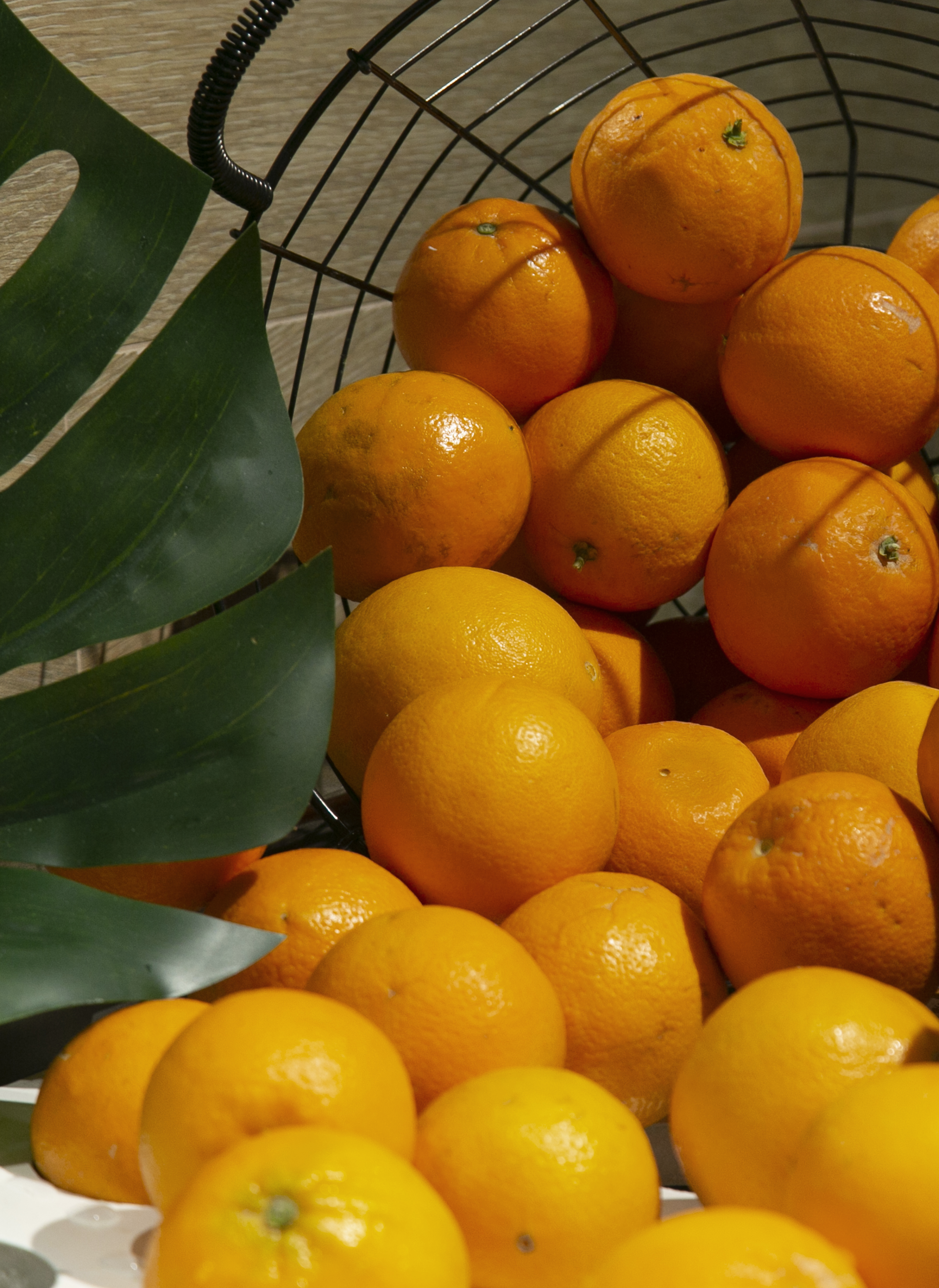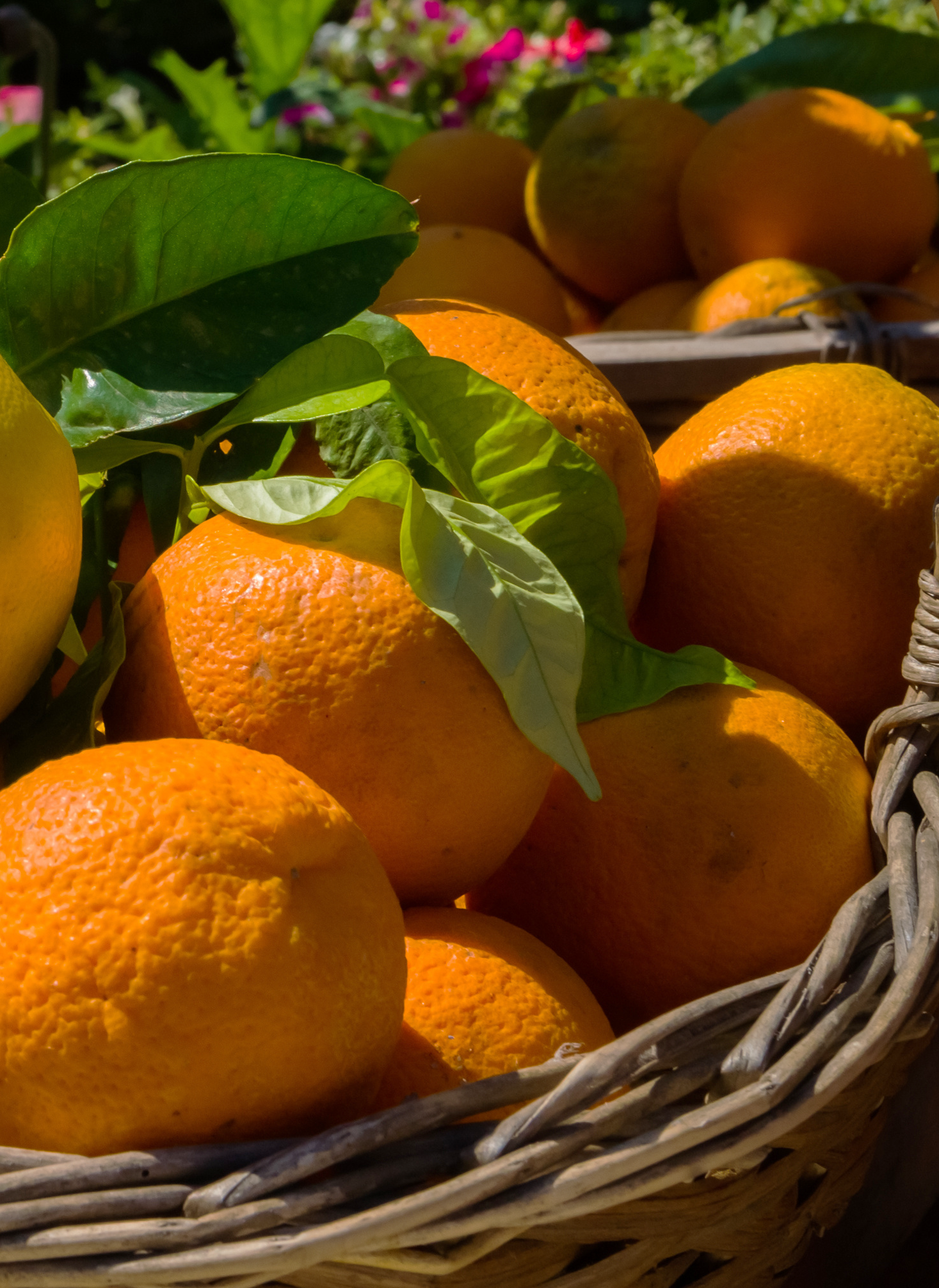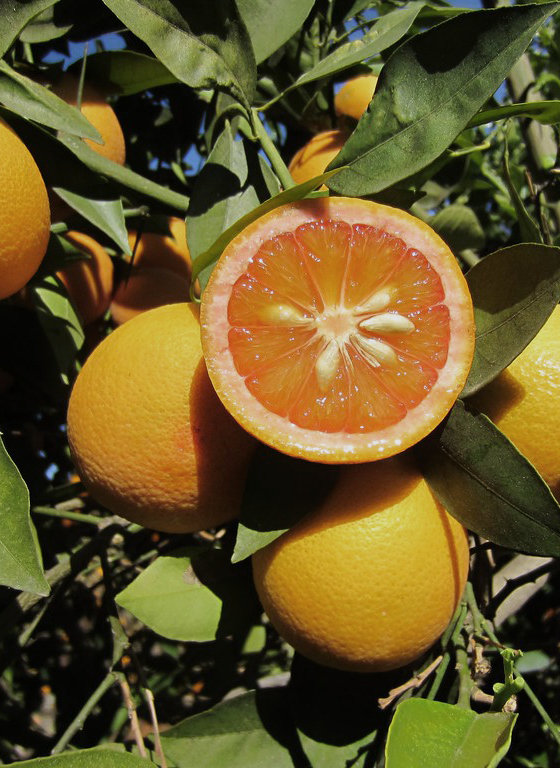
Common Orange
Common oranges constitute about two-thirds of all the orange production. The majority of this crop is used mostly for juice extraction.

Navel Orange
Navel oranges are characterized by the growth of a second fruit at the apex, which protrudes slightly and resembles a human navel. They are primarily grown for human consumption for various reasons: their thicker skin makes them easy to peel, they are less juicy and their bitterness – a result of the high concentrations of limonin and other limonoids – renders them less suitable for juice.

Blood Orange
Blood oranges are a natural mutation of C. sinensis, although today the majority of them are hybrids. High concentrations of anthocyanin give the rind, flesh, and juice of the fruit their characteristic dark red color.

Hybrid
Sweet oranges have also given rise to a range of hybrids, notably the grapefruit, which arose from a sweet orange x pomelo backcross. A spontaneous backcross of the grapefruit and sweet orange then resulted in the orangelo. Spontaneous and engineered backcrosses between the sweet orange and mandarin oranges or tangerines has produced a group collectively known as tangors.

Acidless Orange
Acidless oranges are an early-season fruit with very low levels of acid. The lack of acid, which protects orange juice against spoilage in other groups, renders them generally unfit for processing as juice, so they are primarily eaten.

